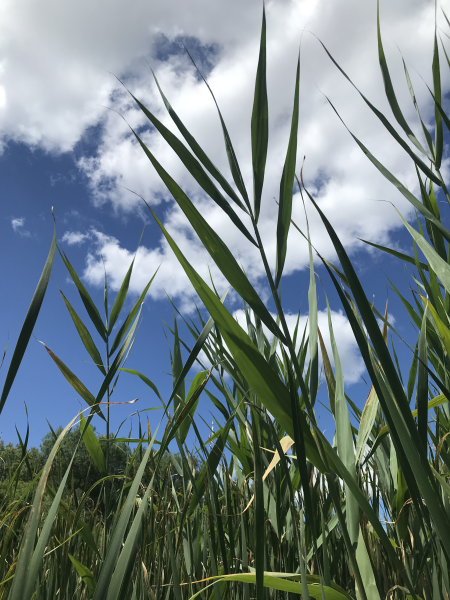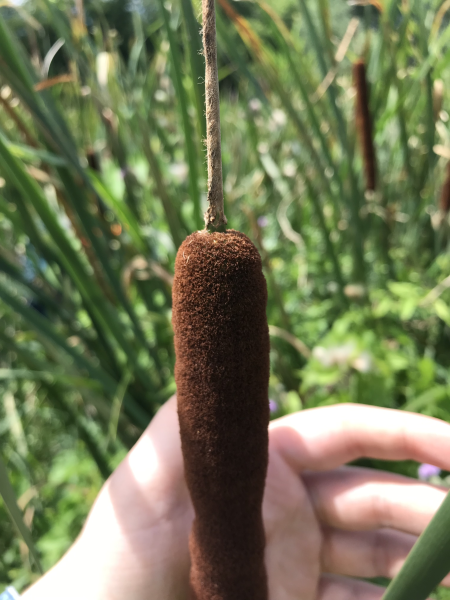
Names and Their Meanings
Broadleaf Cattail - Typha latifolia
Broadleaf Cattail
Description
The book “Traditional Medicines,” published by Mohawk Council of Akwesasne Environment Program, writes the following about Cattails: “This plant is called the ‘Grocery Store’ by our people, because the whole plant is edible.” This plant is ubiquitous for having multifaceted utilitarian value among Indigenous cultures, from eating the new shoots and roots, to using the leaves to make mats and coverings; the cattail has been used as a styptic and a fire starter. Alyssa General explains and etymological relationship between the cattail and the creation story: Onó:ta as a name is related to Tehanó:taton, which means that “he has been downfended,” or “she has been downfended,” and Teyehnó:taton is “they are protected.” In relation to the Creation story when Skywoman and her brother were brought up, they were protected by being downfended. One interpretation is that those babies were laid in Cattail down, so that if anyone came near them, the down would be disturbed, even around the house, too, to know if anyone had come near. Downfending is for prepubescent children and babies. In our cultures, there are programs that have to do with protecting the children before and while they are coming of age.
Conservation Status
In Ontario, Québec and New York S5 (Secure)


